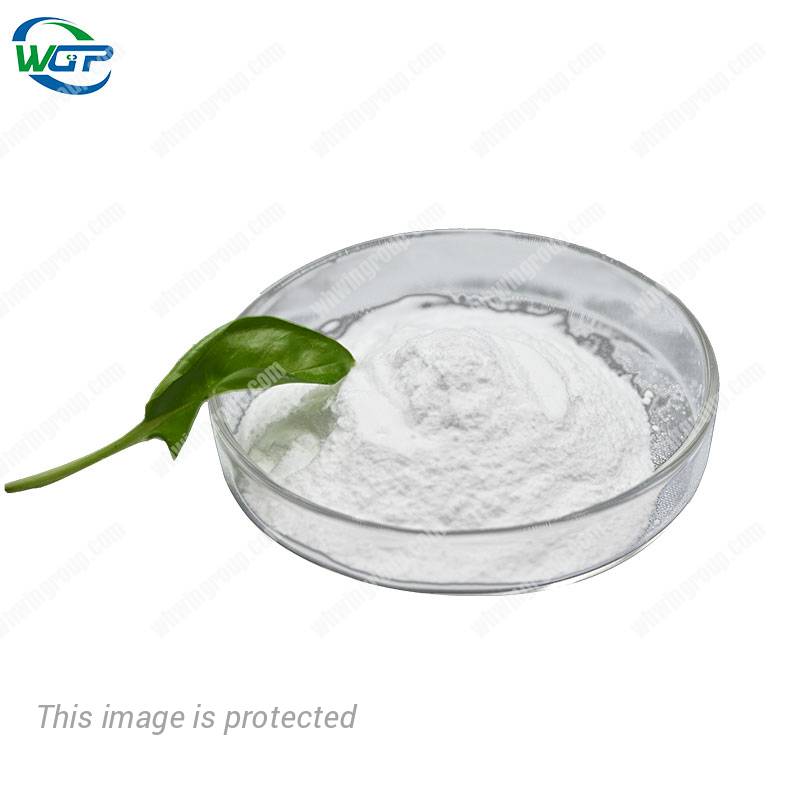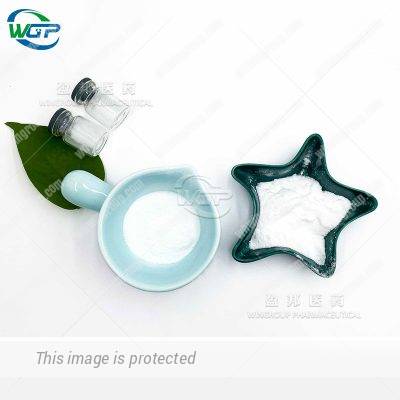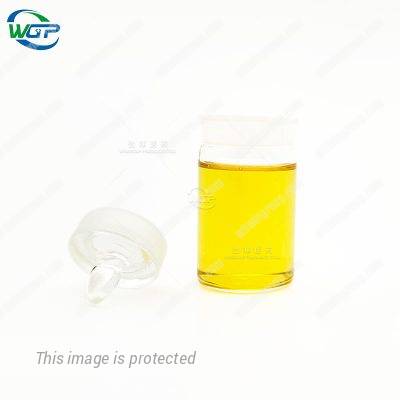Crisaborole
CAS:906673-24-3
MF:C14H10BNO3
Its structure contains a boron atom, which facilitates skin penetration and binding to the bimetal center of the phosphodiesterase 4 enzyme. The unique employment of boron within the chemical structure of the drug is designed to enable selective engagement of PDE4 (an enzyme involved in the conversion of cAMP into AMP, which signals for downstream inflammatory events), effective penetration of the drug through human skin, and rapid clearance to limit systemic circulation.
- Description
- Our Policy
- Additional information
Description
Crisaborole CAS 906673-24-3 Product Information
| Product Name: | Crisaborole |
| Synonyms: | 4-[(1,3-Dihydro-1-hydroxy-2,1-benzoxaborol-5-yl)oxy]benzonitrile AN 2728;AN-2728, >=98%;AN2728, Crisaborole;Crisaborole (AN2728);AN 2728;AN2728/AN-2728;4-((1-Hydroxy-1,3-dihydrobenzo-[c][1,2]oxaborol-5-yl)oxy)benzonitrile;4-[(1,3-Dihydro-1-hydroxy-2,1-benzoxaborol-5-yl)oxy]benzonitrile |
| CAS NO: | 906673-24-3 |
| Molecular Weight: | 251.05 |
| Molecular Formula: | C14H10BNO3 |
| Boiling Point: | 425.9±55.0 °C(Predicted) |
| Melting point: | >130°C (softened) |
| Density: | 1.33±0.1 g/cm3(Predicted) |
| Appearance: | white to beige powder |
| Applications: | A series of phenoxy benzoxaboroles were synthesized and screened for their inhibitory activity against PDE4 and cytokine release. 5-(4-Cyanophenoxy)-2,3-dihydro-1-hydroxy-2,1-benzoxaborole (AN2728) showed potent activity both in vitro and in vivo. AN2728 is being studied as an anti-inflammatory agent. |
| Solubility: | DMSO (Slightly), Methanol (Slightly |
| Storage: | room temp |
crisaborole ointment
Crisaborole ointment is a prescription medication used topically for the treatment of mild to moderate atopic dermatitis, also known as eczema, in patients aged 2 years and older. It is available under the brand name Eucrisa.
Crisaborole is a phosphodiesterase 4 (PDE-4) inhibitor. It works by reducing inflammation and suppressing the production of certain inflammatory cytokines in the skin. This helps to alleviate the symptoms of eczema, such as itching, redness, and skin inflammation.
Crisaborole ointment is applied directly to the affected areas of the skin twice daily. It should be gently massaged into the skin until it is absorbed. It is important to follow the instructions provided by your healthcare professional and the directions on the product label.
As with any medication, there can be potential side effects. Some common side effects of crisaborole ointment include application site pain, burning or stinging sensation, and potential allergic reactions. If you experience severe or persistent side effects, it is recommended to consult your healthcare professional.
crisaborole mechanism of action
Crisaborole ointment, marketed under the brand name Eucrisa, is a topical medication used for the treatment of mild to moderate atopic dermatitis (eczema) in patients aged 2 years and older. The exact mechanism of action of crisaborole is not fully understood, but it is believed to work through multiple pathways to reduce inflammation and symptoms associated with eczema.
Crisaborole is a phosphodiesterase 4 (PDE-4) inhibitor. PDE-4 is an enzyme that breaks down cyclic adenosine monophosphate (cAMP), a molecule involved in various cellular processes, including inflammation. By inhibiting PDE-4, crisaborole increases the levels of cAMP in skin cells, leading to decreased production of pro-inflammatory cytokines, such as tumor necrosis factor-alpha (TNF-alpha), interleukin-12 (IL-12), and interleukin-23 (IL-23). This helps to reduce inflammation and itching associated with eczema.
Additionally, crisaborole has been shown to inhibit the release of certain inflammatory mediators, such as histamine, from mast cells, further contributing to its anti-inflammatory effects.
By targeting these inflammatory pathways, crisaborole helps to alleviate the symptoms of atopic dermatitis, including itching, redness, and skin inflammation.
crisaborole ointment 2
Crisaborole ointment 2% is a topical medication used for the treatment of mild to moderate atopic dermatitis (eczema) in patients aged 2 years and older. It is available under the brand name Eucrisa.
The active ingredient in crisaborole ointment is crisaborole, which is a phosphodiesterase 4 (PDE-4) inhibitor. It works by inhibiting the PDE-4 enzyme, which plays a role in the inflammation process. By inhibiting PDE-4, crisaborole increases the levels of cyclic adenosine monophosphate (cAMP) in skin cells. Elevated cAMP levels help reduce the production of pro-inflammatory cytokines, such as tumor necrosis factor-alpha (TNF-alpha), interleukin-12 (IL-12), and interleukin-23 (IL-23), which are involved in the inflammatory response.
Crisaborole ointment 2% is applied topically to the affected areas of the skin twice daily. It should be gently massaged into the skin until it is absorbed. It is important to follow the instructions provided by your healthcare professional and the directions on the product label.
Common side effects of crisaborole ointment may include application site pain, burning or stinging sensation, and potential allergic reactions. If you experience severe or persistent side effects, it is recommended to consult your healthcare professional.
| Transit time | You will normally receive your parcel within 7-15 working days after shipment (this may be delayed in special circumstances, such as Chinese New Year). |
| Receiving method | Generally we will send the goods by courier or special line, of course, if the goods themselves in the local warehouse have goods, also support self-pickup, depending on the circumstances. |
| Overseas warehouse | We have overseas warehouses in some European countries and Australia, such as Germany, Russia and Australia. |
| Delivery Method | WGP will ship via courier companies such as DHL, FedEx, UPS, TNT or EMS. |
| About After Sales | Within 7 days of your receipt of the goods if you find any problems with the goods (broken packaging, less hair, etc.) please feel free to contact our sales, we will help you deal with it in time. |
Additional information
| Weight | 1 kg |
|---|---|
| Melting Point | 425.9±55.0 °C(Predicted) |
| Flash Point | 245.5±27.3 °C |
| Density | 1.33±0.1 g/cm3(Predicted) |
| Solubility | DMF: 30 mg/ml |
| Color | White |
| Form | Powder |








Reviews
There are no reviews yet.